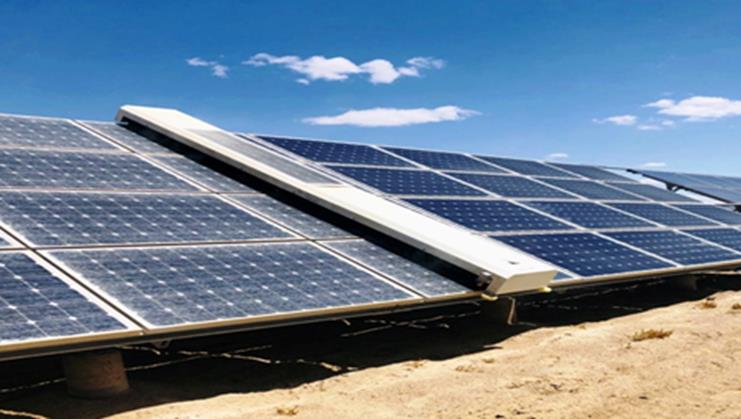Slar panel cleaning robot design dry cleaning

With the rapid expansion of large-scale solar photovoltaic (PV) plants around the world, especially in deserts, urban areas, and high-pollution regions, traditional manual cleaning methods are increasingly unable to meet operational maintenance needs. The fully automated, waterless PV panel cleaning robot system launched by Todos Company is redefining the technical standards of PV panel cleaning with its innovative design concept and intelligent operation and maintenance system. This system is centered around dry cleaning, combined with IoT remote control and AI scheduling algorithms, providing power station operators with an efficient, safe, and sustainable cleaning solution.
1. Technical Parameters and Core Design
- Cleaning Performance Indicators
- Cleaning frequency: Once a day as standard operation
- Single cleaning efficiency: >99% (verified by third-party laboratories)
- Component protection: Uses PA610 super-flexible modified nylon bristles to achieve zero-scratch cleaning through a spiral structure design
- Environmental adaptability: Operating temperature range of -30℃ to 70℃, IP65 protection rating ensures stable operation under extreme conditions such as sandstorms and acid rain
- Power and Mobility System
- Driving unit: 24V/16Ah lithium battery pack paired with a 55W self-powered photovoltaic module to achieve energy closure
- Walking speed: 12 meters per minute (automatically adjusts torque based on terrain gradient ≤ 22°)
- Bristle head speed: 60-120 revolutions per minute with an intelligent adjustment system that dynamically optimizes cleaning intensity based on dust type (sand/industrial dust/bird droppings)

2. Analysis of Core Technological Advantages
- Waterless Cleaning Revolution
- The patented spiral brush technology uses centrifugal force to direct dust away from the component surface along a spiral path, reducing the risk of secondary pollution by 90% compared to traditional water washing
- A self-cleaning program activates after each operation, with high-speed reverse rotation to clear dust accumulation on the bristles, extending the bristle head lifespan to over 3 years
- Intelligent Operation and Maintenance Ecosystem
- Predictive Cleaning Scheduling: AI algorithms integrate meteorological data (wind speed, precipitation probability) with historical power generation efficiency curves to dynamically optimize cleaning time windows
- Digital Twin Monitoring: Real-time monitoring of over 20 operational parameters of each robot, such as current, torque, and cleaning coverage rate, with an abnormal response time of < 5 seconds
- Full Lifecycle Management: Provides closed-loop services from equipment deployment, software upgrades to fault diagnosis, reducing maintenance costs by 62% compared to traditional methods

3. Economic and Environmental Benefit Verification
Taking a 100MW desert solar photovoltaic power station as an example, comparative analysis shows:
| Indicator | Todos Robot System | Manual Cleaning |
|---|---|---|
| Annual Power Generation Increase | 18%-35% | <5% |
| Single Cleaning Cost | $0.08/Wp | $0.22/Wp |
| Water Resource Consumption | 0 m³ | 2.5 m³/MW/day |
| Component Hidden Crack Occurrence Rate | 0.003% | 1.2% |
This system extends component lifespan (expected to increase by 2-3 years) and reduces LCOE (Levelized Cost of Energy), increasing the power station’s IRR (Internal Rate of Return) by 2.8 percentage points.
As the operational maintenance of solar photovoltaic power stations shifts towards unmanned and intelligent transformations, such waterless cleaning robots will become an indispensable infrastructure in the new power system.